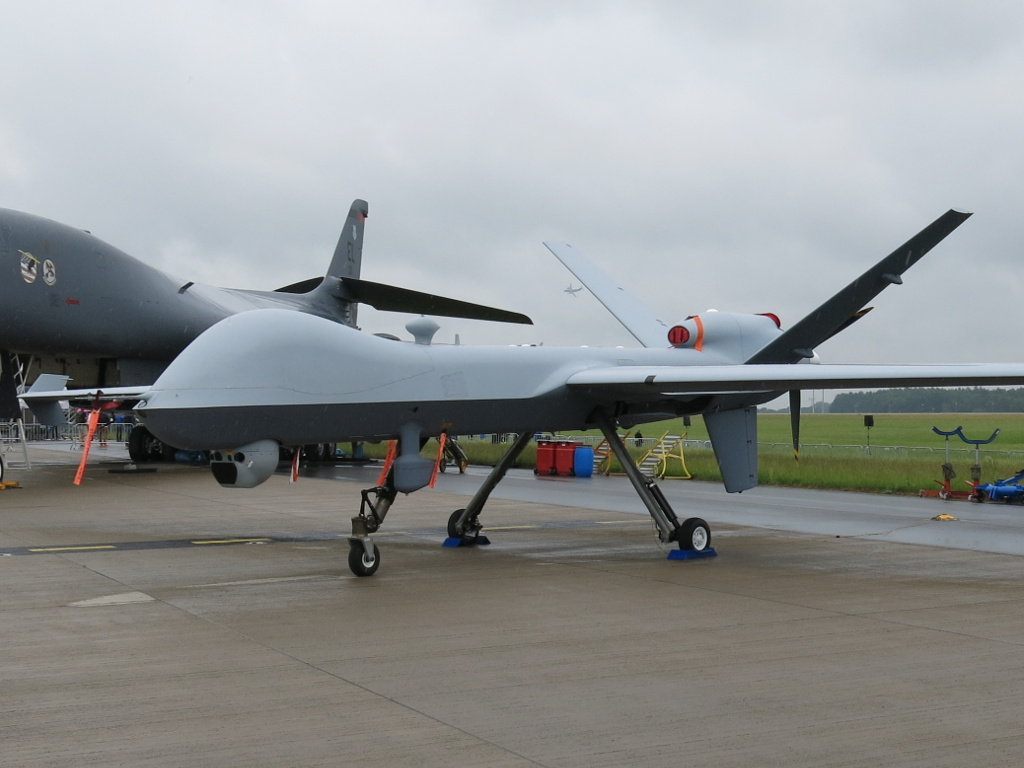
In a recent meeting of the Defense Acquisition Council (DAC), the country’s apex weapons procurement body led by India’s Defense Minister Rajnath Singh, it was announced that India will soon procure the MQ-9B Predator Armed Drones from the United States. The deal to procure the predator drones between India and the United States arose back in 2017 but solidified ahead of Prime Minister Modi’s official state visit to Washington last month. Now, India can purchase 31 drones manufactured by the General Atomics Aeronautical Systems Inc. (GA-ASI), with an estimated worth of over USD $3 billion.
The timing of the deal with Prime Minister Narendra Modi’s state visit to the United States is significant. The acquisition of these drones will help India to boost its surveillance capabilities beyond its borders to the north and at sea in the India Ocean region. The drone deal not only advances India’s defense capabilities amid intensifying tensions with China but increases defense ties, interoperability, and technology transfers between the United States and India.
Increasing Significance of Armed Drones
Since the Gulf War, technological advancements have characterized modern warfare. Experts expect Unmanned Aerial Vehicles (UAVs) to serve as the front lines in future wars. Indeed, the Manned and Unmanned Teaming (MUM-T) is enhancing mission effectiveness through greater situational awareness and is also reducing the gap between humans and technology. Although UAVs carry certain complications in an era of escalating cyberattacks and cybercrimes, their centrality in the future of war appears obvious.
Along with technology’s evolving role in conflict, the Russia-Ukraine war has set the UAV industry up to rise exponentially. The UAVs played a vital role in the Russia-Ukraine war as a tactical technology that helped not only in battlefield surveillance and artillery spotting but also in attacking enemy vehicles. Drones have improved military capabilities through better reconnaissance, target acquisition and surveillance. Since they are unmanned, the lives of the pilots are not at stake. Moreover, since drones are cost-friendly as compared to fighter jets, countries are manufacturing and procuring these technologies at much greater levels.
Along with technology’s evolving role in conflict, the Russia-Ukraine war has set the UAV industry up to rise exponentially.
UAVs in South Asia
The drive for drones has already gripped South Asia. Pakistan, for example, has been importing the Chinese Cai Hong-4 (CH-4) and the Wing Loong-II since 2018, in order to increase its military infrastructure. India had long sought after long endurance predator drones, not only those armed with air-to-ground missiles but also smart bombs, to boost its strike capabilities. India is mostly dependent on Israeli drones to continuously surveil its adversaries along the northern and western borders. The procurement of US MQ-9B drones will further enhance the Intelligence, Reconnaissance, and Surveillance (ISR) mechanisms as well as precision-attack capabilities since they are more advanced and provide over 27 hours of endurance.
In the aftermath of the Galwan Valley clashes in 2020, the Indian Navy used two MQ-9 SeaGuardian drones to keep an eye on the Chinese activities in the Indian Ocean Region (IOR). Since China acted as a continuous source of tensions for India, the decision to ink the contract to lease the drones was taken. India leased the two drones from General Atomics for a year and has extended the lease period. GA-ASI announced last year that the leased UAVs completed10,000 flight hours over two years.
China’s naval base in Djibouti and the significant increase of submarines, research vessels, and People’s Liberation Army Navy (PLAN) ships in the Indian Ocean have raised concerns for New Delhi. The postponing of the missile tests due to the presence of Chinese vessels Yuan Wang 6 and 5 in the Indian Ocean stands as a relevant example. Chinese submarines use the Malacca, Lombok, and Sunda straits to step into the Indian Ocean. Thanks to the advancements in the Unmanned Aerial Systems, a new weapon has stepped in to detect and counter these submarines. The MQ-9B SeaGuardian is the first UAV in the remotely piloted aircraft system (RPAS) category to enable real time search and patrol above and below the sea’s surface. Clearly, acquiring such technologies is the need of the hour.

After properly examining their effectiveness in surveillance missions by Indian military officials, the 31 MQ-9B drones will be allocated to all the three Indian Armed Forces to strengthen their overall operational capabilities. The MQ-9B has two variants – the SkyGuardian and the SeaGuardian drones (maritime variant). The Indian Navy will secure fifteen of the MQ-9B SeaGuardian Drones and eight Sky Guardian Drones will be distributed to the Indian Army and the Indian Air Force respectively.
MQ-9 Armed Drone Specifications
The United States has categorized the MQ-9 drone under the ‘Hunter-Killer UAV’ column. The MQ-9 armed drone is a type of remotely-piloted aircraft that has a wingspan of 66 feet, a length of 36 feet, and a height of about 12.5 feet. It can fly at the speed of 240 KTAS, which is approximately around 299 miles per hour. It can be operated to an altitude of approximately 50,000 feet. The predator drone possesses the capacity to hold armaments such as the AGM-114 Hellfire missiles, GBU-12 Paveway II, GBU-38 Joint Direct Attack Munitions, GBU-49 Enhanced Paveway II, and GBU-54 Laser Joint Direct Attack Munitions. The MQ-9 Reaper is equipped with a Fault-Tolerant Flight Control System and Triple Redundant Avionics System. It is powered by the Honeywell TPE331-10GD Turboprop Engine, integrated with the Digital Electronic Engine Control (DEEC). The drone can carry a payload capacity of up to 3849 pounds. It has nine times more horsepower than the MQ-1 Predator. Additionally, the drone is equipped with the AN/DAS-1 MTS-B Multi Spectral Targeting System that helps in identifying a target precisely. The other radar – AN/APY-8 Lynx II, helps in persistent surveillance missions.
The recent deal to procure the predator drones will significantly help India strengthen its maritime security and its ability to respond to certain regional security challenges.
Having these technologies in-built into the drone, the MQ-9B can provide approximately 80 percent of the capability of a large maritime patrol aircraft with a much lower cost per hour. The acquisition of such drones becomes necessary for the Indian Navy to reduce time, additional cost of the wear and tear, and maintenance. The drone will also reduce crew fatigue in keeping an eye over the vast expanse of the IOR.
Conclusion
Drones today have emerged as game-changers and cutting-edge tools in modern warfare. India is heavily investing it its defense expenditure and allocating huge budgets for indigenous production of drones and ammunitions. Prime Minister Modi’s ‘Aatmanirbhar Bharat’ initiative stands as the main influencer behind such strategies. The recent deal to procure the predator drones will significantly help India strengthen its maritime security and its ability to respond to certain regional security challenges. Apart from strengthening U.S.-India military ties, the deal will also provide mutual benefits to both countries economically. India needs the United States to provide the latest technology, and Washington on the other hand shakes hands with New Delhi to help foster its global strategic rebalancing.
Also Read: India’s Defense Indigenization: An Emerging Arms Exporter?
***
Click here to read this article in Urdu.
Image 1: MQ-9B SkyGaurdian via Picryl
Image 2: MQ-9 Reaper via Wikimedia Commons


